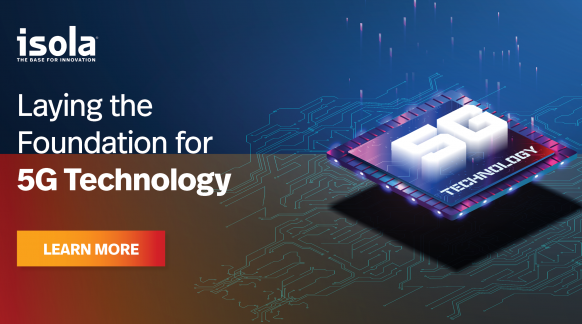Materials Electrify Automotive Circuits
Electric vehicles (EVs) and hybrid electric vehicles (HEVs) are gaining in popularity. Printed-circuit-board (PCB) materials are essential components for these vehicles; reliable circuits are needed to keep EVs and HEVs on the road. Raw circuit materials are key components in any EV or HEV, whether they supply electricity to the headlights and many different safety systems within a vehicle or are part of the power circuits that drive the electric motors or the control circuits that keep the car on the road. Not just any circuit materials carry the special power and control circuits inside an EV or HEV. The materials and the circuits they hold must perform consistently and reliably over severe environmental conditions that can include high temperatures and humidity. The materials must also be competitively priced, for markets that are growing rapidly as drivers face rising gasoline prices worldwide and are starting to recognize the practical nature of EVs and HEVs. Fortunately, Isola Group has the raw circuit materials that are built for the road.
Among the circuit materials with characteristics well suited for EV and HEV power and control and sensor circuits are IS550H and Astra® MT77. Both are thermally robust and developed to provide consistent performance in high-temperature environments. For EV and HEV circuit designers and fabricators concerned with the release of hazardous materials into the environment, IS550H helps to “go green.” It is halogen-free and was developed for high-voltage EV and HEV power circuits. It is CAF resistant and RoHS compliant and can withstand as many as six solder reflow steps to +260°C. With a low coefficient of thermal expansion (CTE) through the thickness or z-axis of the material, it provides the mechanical and electrical stability needed for consistent power circuits to drive the AC and DC motors in EVs and HEVs. The low z-axis CTE of IS550H results in a total expansion of the material of only 2.2% from +50 to +260°C.
IS550H features the lower loss needed for higher-frequency and high-speed-digital (HSD) circuits as evidenced by its low dissipation factor (Df). The Df is typically 0.014 at 2 GHz, 0.014 at 5 GHz, and 0.016 and 10 GHz.
Astra® MT77 is a very low-loss laminate and prepreg with low Df and low Dk. The Df is typically 0.0017 at 2 and 10 GHz and the Dk is 3.00 through the z-axis of the material at 2 and 10 GHz. It has a Tg of +200°C and a Td of +360°C. Another nominal “microwave” circuit material, I-Tera® MT40, has a Dk between the Dk values of 370HR and Astra® MT77, of 3.45 at 2 and 10 GHz. Versions with Dk values of 3.38, 3.60, and 3.75 are also available.
Astra® MT77 has served as the higher-frequency portion of hybrid circuits when teamed with
Isola Group’s 370HR laminates and prepregs, which are considered “standard loss” materials with higher Df than Astra® MT77. Both Astra® MT77 and 370HR materials are very “manufacturing friendly” since they are compatible with the manufacturing processes used to fabricate circuits on FR-4 materials, which are widely used for general-purpose and lower-frequency electronic circuits. 370HR laminates, which are RoHS-compliant for lead-free processing, can be supplied with standard copper films from 0.5 to 2.0 oz. in weight, although thinner and thicker copper films are available.
The number of circuits within each EV and HEV is increasing as each vehicle gains better functionality and safety. Electronic circuits are vital to the high reliability of EVs and HEVs and the materials for those circuits should be chosen with great care. The Asia Pacific division of the Isola Group works closely with circuit designers and fabricators to achieve their goals for all the circuits needed in EVs and HEVs, including power and control circuits with RF/microwave and HSD functions. They can help make your next EV or HEV a success.
by Fandy Wei, Senior Director, OEM Marketing in Asia, Isola
20 April 2022


